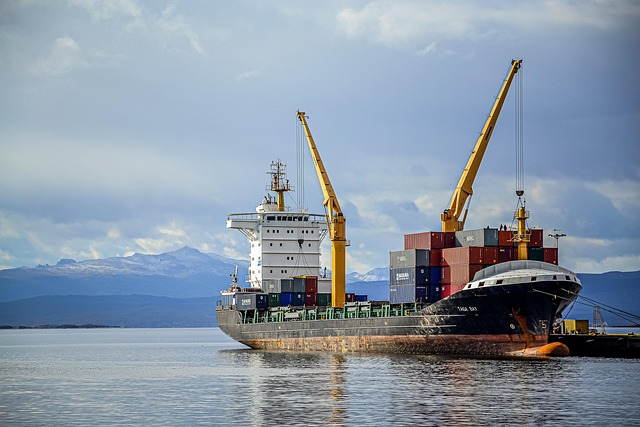One-trip cargo containers provide efficient and cost-effective shipping solutions for diverse industries with various dimensions and insulation options. They ensure stable temperature maintenance, reduce waste, lower costs, and enhance productivity by streamlining logistics operations. Regular inspections, proper handling, and maintenance extend container lifespan for optimal performance across different shipping needs.
One-trip cargo containers, also known as insulated shipping solutions, are transforming global logistics. These innovative containers maintain stable temperatures during transit, ensuring the integrity of temperature-sensitive goods. This article delves into the world of one-trip cargo containers, exploring insulation techniques that control temperatures, highlighting benefits like reduced spoilage and improved product quality, and providing best practices for maintaining container integrity.
- Understanding One-Trip Cargo Containers
- Insulation Techniques for Temperature Control
- Benefits of Stable Transport Temperatures
- Best Practices for Maintaining Container Integrity
Understanding One-Trip Cargo Containers

One-trip cargo containers, as the name suggests, are designed for a single journey, serving as an efficient and cost-effective solution for shipping goods. These containers are built to withstand the rigors of transportation, ensuring they can protect their contents during transit. They come in various dimensions, from standard sizes like 20-footers and 40-footers to high cube options, catering to diverse shipping needs. The versatility of one-trip cargo containers makes them suitable for a wide range of industries, including agriculture, food distribution, pharmaceutical, and more.
Unlike traditional intermodal containers that can be used multiple times, one-trip containers are manufactured for a single round trip or until they reach the end of their useful life. They offer several advantages, such as quick deployment, reduced handling, and minimal damage risk to goods due to their sturdy construction and insulation capabilities. For businesses looking to buy, sell, or rent these containers, especially in the reefer (refrigerated) category for perishable items, there is a vibrant marketplace with numerous dealers and suppliers offering new and used one-trip cargo container units at competitive pricing.
Insulation Techniques for Temperature Control

Insulation is a key component in maintaining stable temperatures within one-trip cargo containers. The primary goal is to minimize heat transfer, ensuring sensitive or temperature-sensitive goods remain at the desired level during transit. Various techniques are employed for effective insulation control. One common method involves using specialized insulating materials like foam, which acts as a barrier, trapping cold or hot air inside the container. These materials are often lightweight yet highly efficient, making them ideal for one-trip cargo containers where weight and space constraints are considerations.
Additionally, advanced technologies such as vacuum insulation panels (VIPs) offer superior performance. VIPs utilize the absence of air to create a near-perfect thermal barrier, significantly enhancing insulation properties. For perishable items requiring controlled refrigeration, high-cube one-trip reefer cargo containers equipped with advanced cooling systems and insulated walls are the norm. These innovative solutions cater to diverse shipping needs, ensuring that goods, regardless of their sensitivity, arrive at their destinations in optimal condition, thereby expanding the capabilities of one-trip cargo containers for sale and enhancing overall supply chain efficiency.
Benefits of Stable Transport Temperatures

Maintaining stable temperatures during transit is a significant advantage of using insulated one-trip cargo containers. These specialized containers are designed to protect goods, ensuring they arrive at their destination in the same condition as when they left. This stability is crucial for perishable items like food and pharmaceuticals, where even minor fluctuations in temperature can cause spoilage or degradation. By keeping temperatures under control, businesses can reduce waste, maintain product quality, and meet customer expectations consistently.
Moreover, stable transport temperatures contribute to more efficient logistics operations. With precise temperature regulation, shippers can avoid the need for frequent temperature monitoring and adjustments en route, streamlining processes and reducing potential delays. This efficiency not only lowers operational costs but also enables businesses to plan and manage their supply chains with greater precision, ultimately enhancing overall productivity and customer satisfaction.
Best Practices for Maintaining Container Integrity

Maintaining the integrity of one-trip cargo containers is paramount to ensure the safe and efficient transport of goods, especially in temperature-controlled environments. Best practices include regular inspections, where potential issues like dents, cracks, or corrosion are identified early. Proper handling techniques are crucial; avoid dropping or rough handling, as it can compromise structural integrity.
Additionally, adherence to loading guidelines is essential. Distribute the weight evenly and ensure items are securely fastened to prevent shifting during transit. In the case of temperature-sensitive cargo, utilize certified one-trip reefer containers that meet specific industry standards. Regular cleaning and maintenance, including sealing and repairing any gaps or tears, contribute to container longevity and effectiveness, ensuring optimal performance in various shipping scenarios, from standard dry goods to high-cube units.
One-trip cargo containers have transformed logistics by offering efficient, insulated solutions for temperature-sensitive goods. Through advanced insulation techniques and best practices, these containers maintain stable transport temperatures, ensuring product quality and safety. By leveraging these innovative solutions, businesses can optimize their supply chains, reduce waste, and meet the growing demand for reliable cold chain management—all while making a sustainable impact on global trade.
